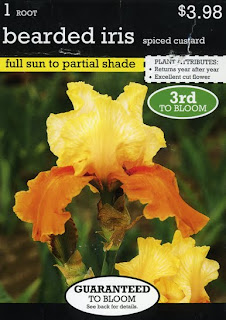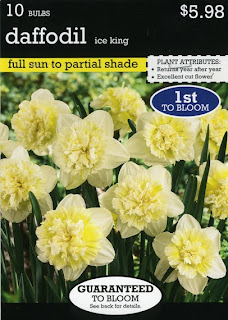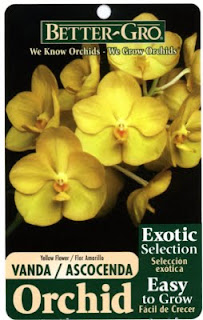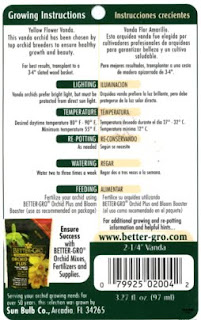Sedums are great for areas where water conservation is needed, sunny spots, and are also fully freeze tolerant. For the large, bushy types, here aren't a lot of choices when it comes to flower color, but the honeybees enjoy then as they are.
Tuesday, September 21, 2010
Handsome self-reliant sedums giving fall bloom
These sedums have been growing here for several years now. The clumps enlarge each year. I have a few in shady spots - not good, they are leggy and fall over. These, in containers or in the yard, grew with minimal (container) or no (in ground) watering this summer. The flowers aren't flashy, but quite handsome and the bees love them.
 In a strawberry jar, with smaller sedums and sempervivum in the side pockets. Minimal watering needed, and in full sun.
In a strawberry jar, with smaller sedums and sempervivum in the side pockets. Minimal watering needed, and in full sun.
 Same idea as the other strawberry jar. This variety has burgundy leaves.
Same idea as the other strawberry jar. This variety has burgundy leaves.
 There was no chance this summer to keep this area clean and watered. The sedum didn't care, and is now quite handsome.
There was no chance this summer to keep this area clean and watered. The sedum didn't care, and is now quite handsome.
Sedums are great for areas where water conservation is needed, sunny spots, and are also fully freeze tolerant. For the large, bushy types, here aren't a lot of choices when it comes to flower color, but the honeybees enjoy then as they are.
Sedums are great for areas where water conservation is needed, sunny spots, and are also fully freeze tolerant. For the large, bushy types, here aren't a lot of choices when it comes to flower color, but the honeybees enjoy then as they are.
Generous fall harvest, tomatoes, peaches, chives
Also mint, basil, volunteer cilantro, bell peppers, chilis (still green).
 A couple dozen fell off with the heavy rains the past few days. They taste very 'peachy' although not super sweet. There are also about 2 dozen left on the tree. Cool!
A couple dozen fell off with the heavy rains the past few days. They taste very 'peachy' although not super sweet. There are also about 2 dozen left on the tree. Cool!
 Tomatoes continue to produce. The heavy rains caused splitting of the cherry tomatoes, and a few big tomatoes. The Better Boys have given us some humongous juicy tomatoey tomatoes, and the others have done well, as well. "Fourth of July", while not producing until mid august, has been quite rewarding with plum-sized juicy fruits.
Tomatoes continue to produce. The heavy rains caused splitting of the cherry tomatoes, and a few big tomatoes. The Better Boys have given us some humongous juicy tomatoey tomatoes, and the others have done well, as well. "Fourth of July", while not producing until mid august, has been quite rewarding with plum-sized juicy fruits.
 This is very late for a chive crop. These gave enough for a big batch of chive-filled dumplings.
This is very late for a chive crop. These gave enough for a big batch of chive-filled dumplings.
Labels:
chinese chives,
cilantro,
peach,
pepper,
tomato
Monday, September 20, 2010
Spring Bulbs, time to plant.
With so much demanding my time, I'm not planting as many Spring bulbs this year. More than that, I'm not ordering via mail order. I did pick up some packages at a big box store. There was a big bag with 75 daffodil bulbs (standard yellow "Dutch Master" and the ones below. Doubtless I'll add some more this fall. Not wanting to overdo it. Plus, there are hundreds in the ground from previous years, and some have probably multiplied.
 The price is lower than last year. These don't seem to make it. I have about 25% or 50% survival, then it takes a couple of years to reach blooming size. Not sure why. They are usually quite dried out by the time I get them, which I think stresses the plant significantly. I planted this one in a slightly raised area, to avoid rot during the rains already happening and soon to increase.
The price is lower than last year. These don't seem to make it. I have about 25% or 50% survival, then it takes a couple of years to reach blooming size. Not sure why. They are usually quite dried out by the time I get them, which I think stresses the plant significantly. I planted this one in a slightly raised area, to avoid rot during the rains already happening and soon to increase.
Irises are a challenge even when established. The rhizomes need to be at soil surface. It's difficult to weed under and around them, so the tend to be very weedy. I plan to reduce the number somewhat this winter, keeping groups of each variety but not letting them roam all over the garden beds.
 I've given up on bulb planters, and instead use a shovel, dig a hole about 1 foot diameter and 6 inches deep, and plant 5 or 6 at a time. That way there are nice bunches the following spring, instead of one bulb here and one bulb there.
I've given up on bulb planters, and instead use a shovel, dig a hole about 1 foot diameter and 6 inches deep, and plant 5 or 6 at a time. That way there are nice bunches the following spring, instead of one bulb here and one bulb there.
According to my study program, I should take a 5 min break per hour. I'm taking about 10 min, enough to plant a few bulbs.
 The price is lower than last year. These don't seem to make it. I have about 25% or 50% survival, then it takes a couple of years to reach blooming size. Not sure why. They are usually quite dried out by the time I get them, which I think stresses the plant significantly. I planted this one in a slightly raised area, to avoid rot during the rains already happening and soon to increase.
The price is lower than last year. These don't seem to make it. I have about 25% or 50% survival, then it takes a couple of years to reach blooming size. Not sure why. They are usually quite dried out by the time I get them, which I think stresses the plant significantly. I planted this one in a slightly raised area, to avoid rot during the rains already happening and soon to increase.Irises are a challenge even when established. The rhizomes need to be at soil surface. It's difficult to weed under and around them, so the tend to be very weedy. I plan to reduce the number somewhat this winter, keeping groups of each variety but not letting them roam all over the garden beds.
 I've given up on bulb planters, and instead use a shovel, dig a hole about 1 foot diameter and 6 inches deep, and plant 5 or 6 at a time. That way there are nice bunches the following spring, instead of one bulb here and one bulb there.
I've given up on bulb planters, and instead use a shovel, dig a hole about 1 foot diameter and 6 inches deep, and plant 5 or 6 at a time. That way there are nice bunches the following spring, instead of one bulb here and one bulb there.According to my study program, I should take a 5 min break per hour. I'm taking about 10 min, enough to plant a few bulbs.
Friday, September 17, 2010
Orchid Blogging
Still learning about orchids, and watching their progress over the past year. It's been about that long since I started becoming more interested in them.
The way I look at it, the first part is to not-kill them. The second part is to get them to grow. The 3rd part is to get them to bloom. Propagation is optional, but fun. If purchased in-bloom, another aspect of the first part is to keep them blooming as long as possible. That seems to be rather easy.
 This unlabeled Paphiopedilum hybrid, Maudiae type, was one of the first that I obtained. I need to check - I think it's a green flowered type. Should be back in the links (labels). I've been treating it as the books instruct, medium light, general orchid plant food weakly weekly. It added a couple of new growths. I count the leaves, thinking that if a growth reaches 5 or 6 leaves, it will be time to bloom. Not certain it that's true, but last week I noted the appearance of a bud. Cool!
This unlabeled Paphiopedilum hybrid, Maudiae type, was one of the first that I obtained. I need to check - I think it's a green flowered type. Should be back in the links (labels). I've been treating it as the books instruct, medium light, general orchid plant food weakly weekly. It added a couple of new growths. I count the leaves, thinking that if a growth reaches 5 or 6 leaves, it will be time to bloom. Not certain it that's true, but last week I noted the appearance of a bud. Cool!
 Close-up of the bud. Another may be headed there as well, I'll add it if it really is a flower bud. I understand that the process from bud to blossom is gradual, and patience is needed. The upside of that slow process, is that once in bloom, the flowers can last a month or more. Regardless, I'm excited!
Close-up of the bud. Another may be headed there as well, I'll add it if it really is a flower bud. I understand that the process from bud to blossom is gradual, and patience is needed. The upside of that slow process, is that once in bloom, the flowers can last a month or more. Regardless, I'm excited!
 The books and the Yamamoto website (see prior posts) promote a season of coolness in bright light to promote Dendrobium nobile hybrid blooming. These are under eaves (out of the rain) south side of house (bright light). One can hardly call the light here in the Pacific Northwest "direct sunlight" so I'm not concerned about sunburn, and anyway these plants were in full unfiltered sun all summer long. This treatment, allowing coolness at night and not soaking them, keeping them in bright light, is considered key to obtaining nice flowers on these hybrids.
The books and the Yamamoto website (see prior posts) promote a season of coolness in bright light to promote Dendrobium nobile hybrid blooming. These are under eaves (out of the rain) south side of house (bright light). One can hardly call the light here in the Pacific Northwest "direct sunlight" so I'm not concerned about sunburn, and anyway these plants were in full unfiltered sun all summer long. This treatment, allowing coolness at night and not soaking them, keeping them in bright light, is considered key to obtaining nice flowers on these hybrids.
 Of course, this NOID Dendrobium nobile hybrid continues to cheerfully violate the rules, blooming and blooming and blooming. It is indoors in a south exposure, but spent the summer in the same location as the others.
Of course, this NOID Dendrobium nobile hybrid continues to cheerfully violate the rules, blooming and blooming and blooming. It is indoors in a south exposure, but spent the summer in the same location as the others.
 Dendrobium phaelenopsis "Genting" obtained last month at Missouri Botanical Gardens in St. Louis, after traveling to midwest for my dad's funeral. It continues to bloom cheerfully. I'll hold off any repotting until it finishes blooming.
Dendrobium phaelenopsis "Genting" obtained last month at Missouri Botanical Gardens in St. Louis, after traveling to midwest for my dad's funeral. It continues to bloom cheerfully. I'll hold off any repotting until it finishes blooming.
 This Cymbidium has been in a full-sun exposure, all summer. I generally gave it "weekly weakly" feeding, but on occasion provided some higher nitrogen plant food, because most instructions suggest higher nitrogen in summer. I'm keeping it outside for cool nights, per standard instructions for this genus.
This Cymbidium has been in a full-sun exposure, all summer. I generally gave it "weekly weakly" feeding, but on occasion provided some higher nitrogen plant food, because most instructions suggest higher nitrogen in summer. I'm keeping it outside for cool nights, per standard instructions for this genus.
 Here's the question now - Is this a flower bud? Or another growth spurt. Watchful waiting!
Here's the question now - Is this a flower bud? Or another growth spurt. Watchful waiting!
 Now we get to "the problem with impulse buying". Last year I bought this plant on impulse at a big box store. It was in a tiny plastic bag. The label is below.
Now we get to "the problem with impulse buying". Last year I bought this plant on impulse at a big box store. It was in a tiny plastic bag. The label is below.
 I didn't know anything about Vandas or Ascoscendas at the time. Both are probably inappropriate for this setting and my house, needing more light than I can provide.
I didn't know anything about Vandas or Ascoscendas at the time. Both are probably inappropriate for this setting and my house, needing more light than I can provide.
 Instructions not too helpful either. Can't even tell, is it an Ascocenda or a Vanda? Peobably should throw it away, space is valuable. But, it stays alive, growing slowly, so I'll keep it for now.
Instructions not too helpful either. Can't even tell, is it an Ascocenda or a Vanda? Peobably should throw it away, space is valuable. But, it stays alive, growing slowly, so I'll keep it for now.
The way I look at it, the first part is to not-kill them. The second part is to get them to grow. The 3rd part is to get them to bloom. Propagation is optional, but fun. If purchased in-bloom, another aspect of the first part is to keep them blooming as long as possible. That seems to be rather easy.
 I didn't know anything about Vandas or Ascoscendas at the time. Both are probably inappropriate for this setting and my house, needing more light than I can provide.
I didn't know anything about Vandas or Ascoscendas at the time. Both are probably inappropriate for this setting and my house, needing more light than I can provide. Instructions not too helpful either. Can't even tell, is it an Ascocenda or a Vanda? Peobably should throw it away, space is valuable. But, it stays alive, growing slowly, so I'll keep it for now.
Instructions not too helpful either. Can't even tell, is it an Ascocenda or a Vanda? Peobably should throw it away, space is valuable. But, it stays alive, growing slowly, so I'll keep it for now.
Thursday, September 16, 2010
Backyard Orchard: The payoff!
Studying diligently for my recertification, not spending time in the garden. Always some reason to neglect it! That's one of the great things about the backyard orchard - it doesn't need care at the time of harvest, and the harvest is great if the weather permits and prior preparation was good.
 Late frost and chilly spring meant a lot of grapes didnt set. Even so, there are plenty odf sweet flavorful grapes to eat now and for the next month or so.
Late frost and chilly spring meant a lot of grapes didnt set. Even so, there are plenty odf sweet flavorful grapes to eat now and for the next month or so.
 Tomatoes are doing great! The delay just made them all the sweeter in my mind!
Tomatoes are doing great! The delay just made them all the sweeter in my mind!
 Oh man, the pears! Luscious, sweet, a dessert in eveyr bite! Eating one every day.
Oh man, the pears! Luscious, sweet, a dessert in eveyr bite! Eating one every day.
 Still some Asian pears remaining. I think they'll last a little longer on the tree while I eat the European pears. The first of the asian pears were wonderful!
Still some Asian pears remaining. I think they'll last a little longer on the tree while I eat the European pears. The first of the asian pears were wonderful!
Labels:
Asian pear,
peach,
pears,
pepper,
tomato
Subscribe to:
Posts (Atom)